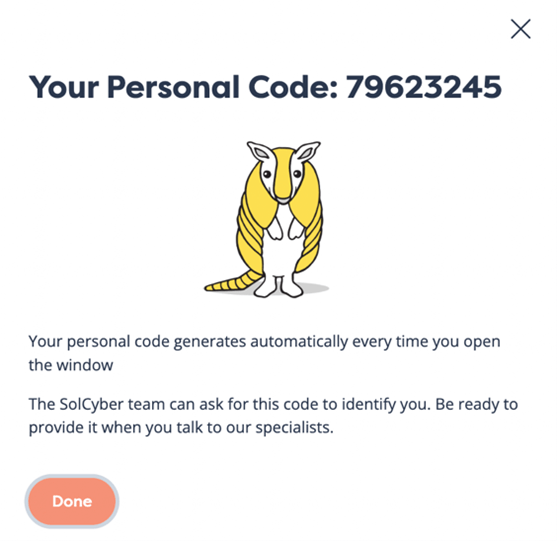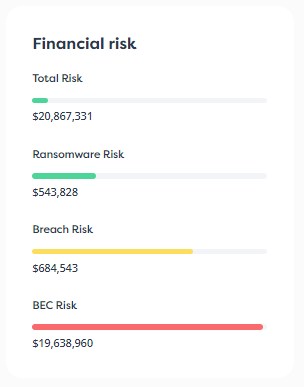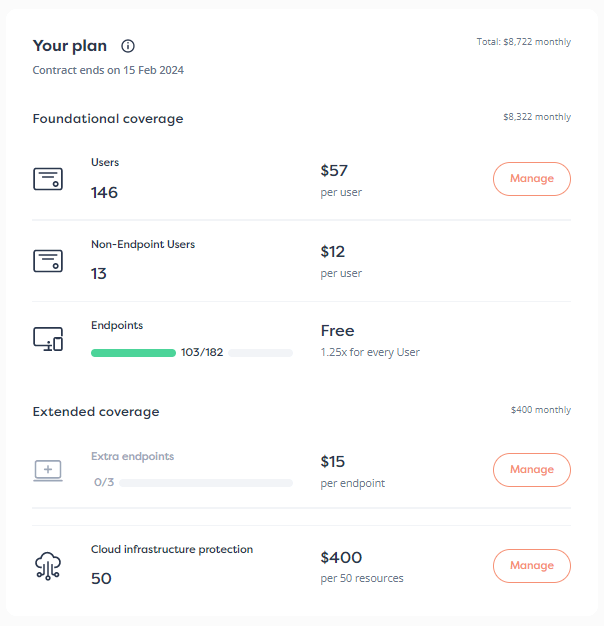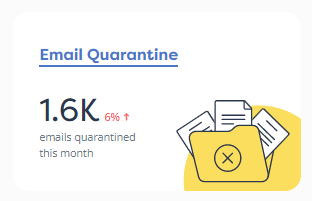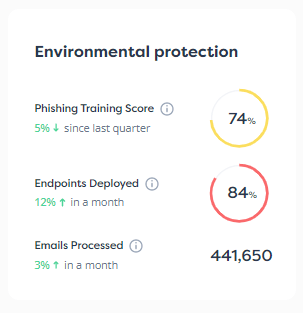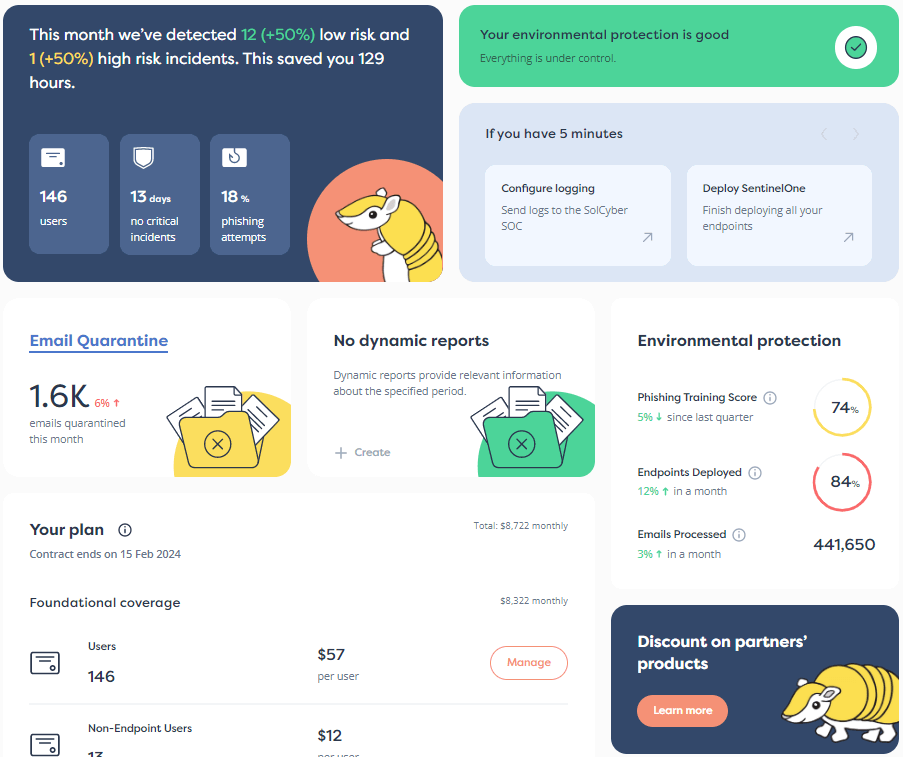

The average cost of a data breach in 2023 was $4.45 million — a 15% increase over three years, marking yet another year in which the average cost has risen significantly. Yet, costs can balloon even higher. Just recently, Change Healthcare had to shell out billions after its breach earlier this year. With the devastatingly high costs of cyberattacks, acting only after you’ve been compromised is a good way to incur some heavy payments or, in some cases, even go out of business. To become cyber resilient, stay on top of cyber threats, and minimize the risk of a breach, companies need to rely on proactive prevention, including vulnerability management.
Most breaches — whether it’s a ransomware attack, DDoS attack, or a data breach — begin with bad actors searching for critical vulnerabilities they can exploit. Vulnerabilities in systems, applications, and devices are open doors that allow bad actors to waltz in and take over.
Because software development cycles are fast, vulnerabilities are often discovered and patched after an update is released, leaving users open to risk until they implement the patch. Given the number of SaaS applications, devices, and systems most businesses rely on to conduct business, it’s highly likely that vulnerabilities exist in their networks and that their companies are thereby open to some amount of risk.
Vulnerability management addresses this risk and is a vital part of a comprehensive cyber resiliency plan. Here’s what vulnerability management looks like and why it is essential for companies of all sizes.
Bad actors are working harder than ever to break into your network. Dark web forums are full of exploit kits that offer up known vulnerabilities along with instructions on how to deploy them. When software companies release patches to solve for known vulnerabilities, or the common vulnerabilities and exposures (CVEs) database is updated, hackers quickly get to work exploiting them. They also use bots to run a barrage of attacks on every site they can find. So, even if they’re not looking for a specific vulnerability, they’re likely to stumble upon one and exploit it.
Once bad actors find a vulnerability, they can enter your organization (unseen) and monitor, intercept, or send information to and from employees, extract customer data or sensitive information that could be held for ransom, deliver malware, steal IP addresses, deploy APT attacks, and more. If a company doesn’t have the proper protections in place, including vulnerability management, it’s not a matter of if an attack will happen, but simply when.
Over the last 20 years, organizations’ digital footprints have expanded exponentially, along with their attack surfaces. Vulnerability management ultimately comes down to monitoring a company’s digital footprint, and then searching for and fixing any gaps or weaknesses in devices, systems, and applications. IIt includes a series of tools and processes, including vulnerability assessments, vulnerability scanners, patch management, configuration management, SIEM, penetration testing, and, of course, vulnerability remediation efforts.
Scanning your entire attack surface including devices for vulnerabilities is a huge undertaking. Each employee is likely logging into company email and software on multiple devices, including personal phones and laptops. And now, with the rise of remote work, many employees are also working on unsecured home networks over which IT teams have little or no control.
Additionally, companies should also look for vulnerabilities in their partners’ and vendors’ security programs because supply chain attacks are on the rise and many large corporations are being infiltrated via gaps in their vendor’s security programs.
When it comes to internal software and SaaS applications, companies need to regularly scan everything, including any marketing, payroll, HR, finance, and legal software being used to conduct critical business operations each day. Bad actors can even enter an organization via a vulnerability on a company’s social media channel.
Each of these areas has its own risks and potential vulnerabilities that are constantly popping up. Without a strategic vulnerability management program, security teams won’t be able to keep up with the work of systematically combing through systems to spot vulnerabilities. That leaves their company in a risky position where compromises can eventually happen.
Unfortunately, vulnerability management isn’t something you can ever really cross off your list. It’s an ongoing process. Bad actors (or ideally an internal or hired red team) find vulnerabilities in a company’s security posture. The company patches the system, then new vulnerabilities are discovered, and the cycle repeats.
Data breaches have dominated headlines over the last decade, and exploiting software vulnerabilities is a recurring theme. In many cases, these vulnerabilities were already publicized; but due to an organization’s failure to address them, they succumbed to an attack. Here are just a few of the headlines.
But it’s not just bands of rogue hackers who are searching for and exploiting these vulnerabilities. The NSA and FBI warned that the Russian Foreign Intelligence Service has been exploiting a known TeamCity vulnerability, and a state-sponsored team of Russian hackers carried out one of the largest cyberattacks in U.S. history — the SolarWinds attack of 2020. This is perhaps the biggest example of an attack that was the result of a known vulnerability exploit. Recently, an investigative report was published claiming that a whistleblower warned Microsoft about the vulnerability years before the attack, but Microsoft chose to ignore the warnings.
What do all these attacks have in common? They could have been prevented with simple software patches and active vulnerability management. Every vulnerability was known and addressed via patches by the software developers. Had companies updated their software, they could have saved themselves significant headaches — and dollars.
Though it may feel daunting, companies need an effective vulnerability management program in place to remain safe and keep a proactive approach. With a robust in-house security team, companies may be able to handle these efforts internally. Organizations without a robust cybersecurity team will likely need to outsource vulnerability management to a partner that has the capacity to build a strategy, utilize vulnerability management solutions, and continually monitor the company’s entire digital footprint, and immediately patch or repair vulnerabilities.
SolCyber is the first-of-its-kind outsourced security program partner. With our 24/7 detection and response services and Foundational Coverage, businesses of all sizes can stand up a vulnerability management program in weeks. We ensure your programs are regularly updated and patched, and constantly monitor your network to ensure bad actors can’t get in.
If you don’t have a vulnerability management plan an process in place, reach out to the experts at SolCyber to get started today.


By subscribing you agree to our Privacy Policy and provide consent to receive updates from our company.

